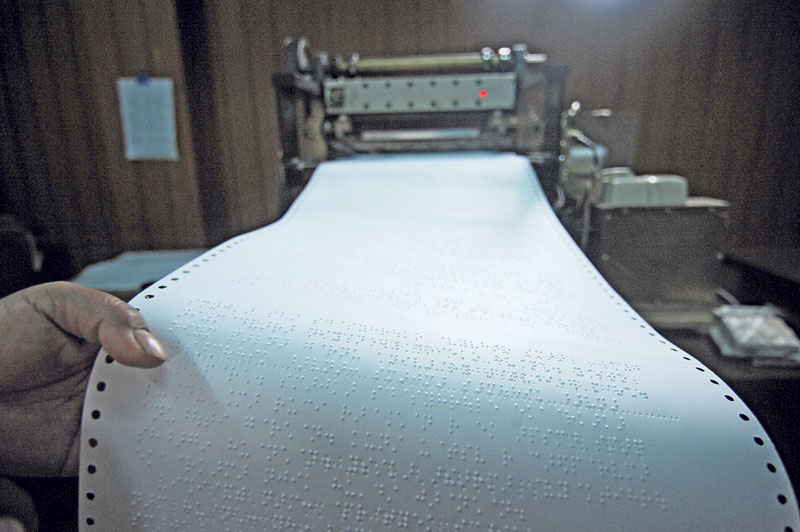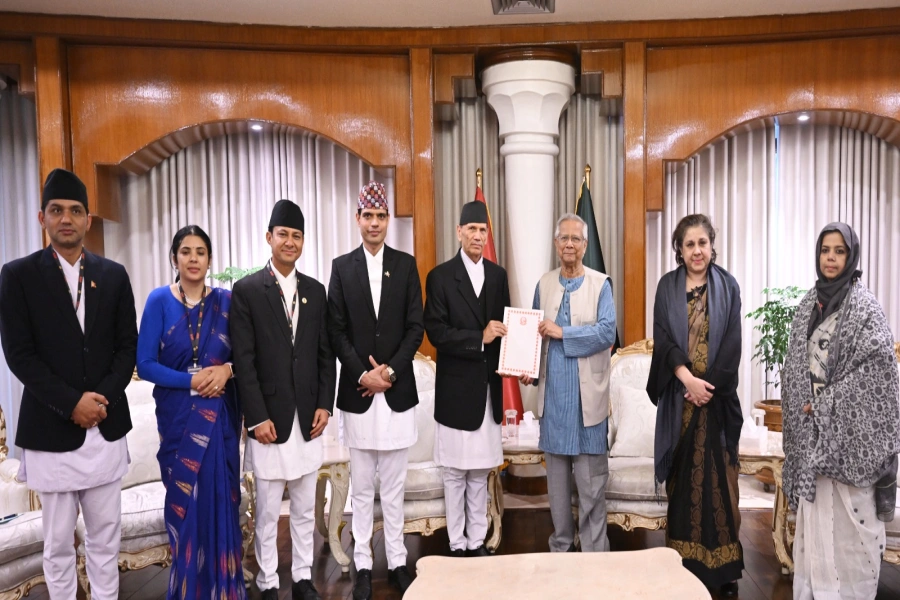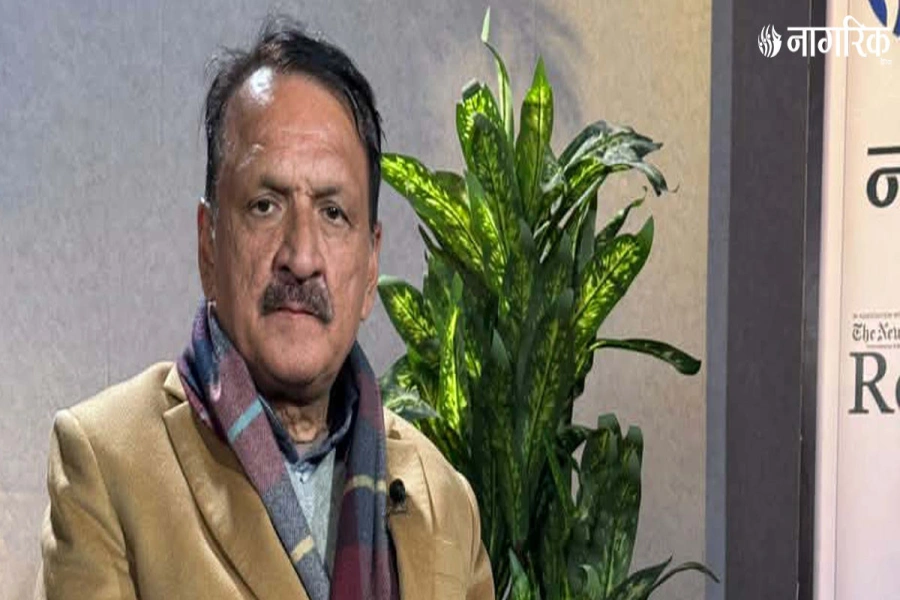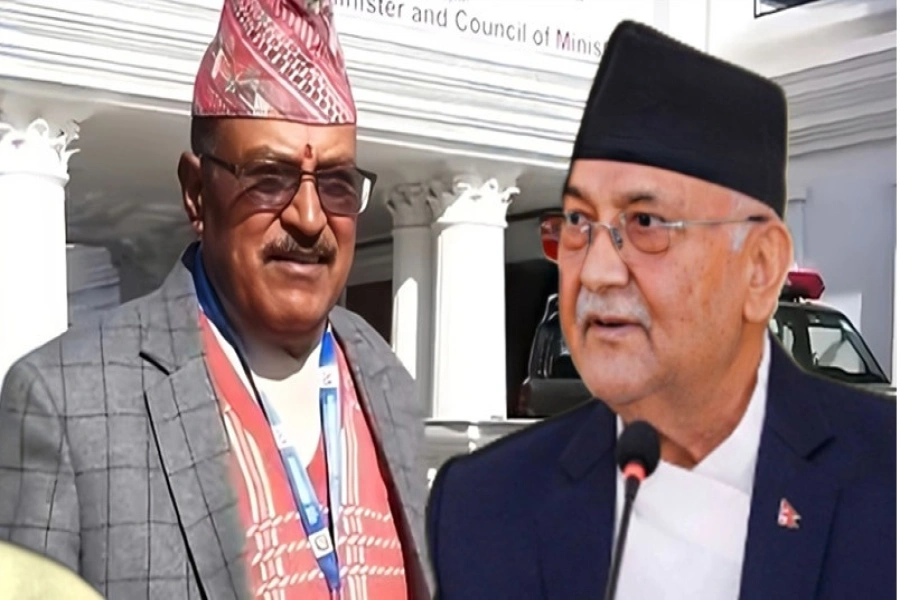The debate of Braille vs. audio books has been simmering in the visually impaired community for a while now. There are people who believe it’s time to move on to ITC approved audio books as well as other similar audio based learning guides. They confidently claim that there is no need for Braille anymore.
 Om Bam Malla
Om Bam Malla
However, Nepal Association for the Welfare of the Blind (NAWB), the country’s oldest Braille book publishers, are still standing firm on their ground. Om Bam Malla, execute director of NAWB explains, “Some fear that Braille is too technically challenging to learn and they want to move to easier means like audio. But Braille is still the basic around the world. There is a big difference in only understanding a meaning of the word and then being able to write and express the words when necessary.”
But while the discussions carry on, Braille books are still the most popular means for visually impaired Nepalis especially students to get their share of reading. Priyanka Gurung met up with Malla at the NAWB office to find out more about Braille books, their publishing practices, and readers.
Blind but not in the Dark: The Story of Visually-Impaired Footb...

What kind of books does NAWB publish?
In Nepal, there are only two organizations (NAWB and National Association of the Blind, NAB) that help publish Braille books. Every year the Department of Education issues a tender of a list of academic books that they need and accordingly, we set about translating and printing them. We just recently finished a batch. These books are all compulsory subjects that students have to study in school. They have the same text as the regular ones, we just have to translate them. It is distributed to 79 integrated schools and 1300 students all over the country.
Don’t you publish other works that aren’t a part of the academic course?
Yes, we call them reference books and they are mostly those iconic works of Nepali literature. These reference books are not commissioned by anybody in particular, but we took the initiative to publish them ourselves. So we have about 32 books including the likes of Naso, Muna Madan in our collection.

Don’t you have plans to publish more such reference books, perhaps ones from English as well?
It’s very costly to print a Braille book so when it isn’t being commissioned, it is very difficult for us to publish these books on our own. If we were to break it down, a single sheet for a Braille book costs us about three rupees. Add to the time and the manpower required to type, translate, proof read, print and bind, it easily adds up to Rs 13. Since we operate solely with motives for service not profits, we don’t have the necessary funds.
We rely heavily on donations and the government’s assistance. Braille equipments are very costly too. Our embosser which pokes the holes in the sheet cost us Rs 45,00,000 and that was 15 years ago. We really need to upgrade our technology but we can’t even afford that yet. We are trying to look for more economical options as well as donors so in midst of it all, publishing extra reference books takes a back seat.
If somebody wanted to access these books, where would they get it from?
We have our own library here at the NAWB. They can access the books here. But we are aware that can’t be a possibility for many so our program coordinator Ratna Kaji Dongol overseas the running of a mobile library as well. We wanted to make sure that students outside the valley could enjoy the Braille books so we came up with the concept in 2010. We basically rotate the mobile library among various schools since we only have a limited number of books. We leave certain number of reference books at one location for a couple months and once they have finished it, we bring in a new batch and take the older one elsewhere. That’s how we have been granting access to our publications.
How do you think the audio book is going to affect Braille book publications?
Audio books are incredibly useful and convenient. As it is, in our country those who have graduated school have to rely on audio books for their education. We only have course books in Braille till the SLC level. Many students have no choice in the matter. But the fact remains that Braille is the basics. It’s where all the learning begins for the visually impaired. Reading and writing will always be a useful skill for them. So in a way, the problem isn’t audio books, we can use them simultaneously. The problem is that there aren’t enough funds to translate and publish as many Braille books as we need.
Are there any other new projects that you are trying to bring about?
We do have a pilot project going on at the moment. Two years ago, we got this equipment that could print out graphics in Braille. Normally, Braille books don’t have pictures so the social studies or science books that our students read only have texts in Braille. But now, with this new technology, we have started printing specific subject books that are full of pictures. For example, the social studies graphic books have maps, flags, charts and so on all in Braille. We use different patterns and patches to distinguish them. We have to also teach the students to read them which should be an exciting prospect.
Similarly, NAWB also has a magazine. It has various news, horoscopes and stories and used to be published once every three months. However, today with a new grant, we are able to publish it once a month. It is quite popular among our visitors and those who use our mobile library. We have many calling in to give us feedback.
So are you satisfied with all the services that have been provided to Braille readers?
There certainly is a lack of material for the visually impaired who like to read in our country. There is a shortage in quantity and variety and getting access to it is difficult as well, so there is certainly a lot more we could do. We are trying our best but, as I mentioned, we have to rely heavily on the government and funds. A little more interest in the area could help bolster Braille publications tremendously. Currently, we are only covering a tiny portion of the market. There are plenty more opportunities that are yet to be explored.






































